Categories: Featured Articles » Electrician at home
Number of views: 41790
Comments on the article: 2
What cable can be used outdoors and how to lay it
When arranging a precautionary site, there is a need to conduct light into the gazebo, garage and outbuildings. The novice master is faced with the problem of choosing cable products that would serve for a long time both under the scorching sun and in severe frost. Therefore, we have put together recommendations for choosing cables for outdoor use.
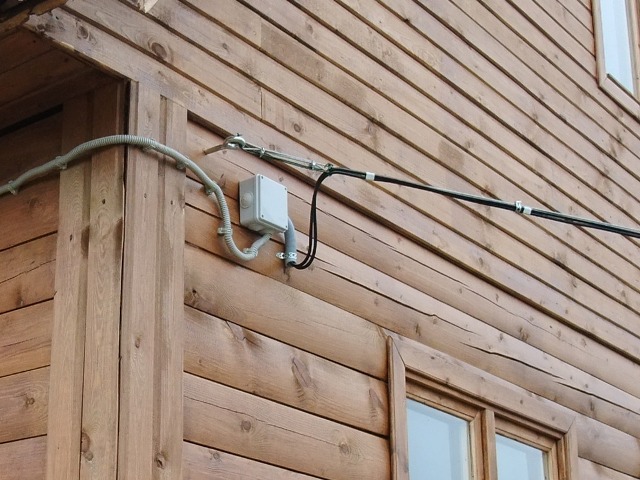
What is dangerous laying on the street
There are a number of dangerous factors for cable on the street. Consider them and how to deal with them.
1. The wind. When laying outdoors, be aware that during the storm the cable will be subjected to stresses such as stretching and jerking.
2. Frost. The insulation of most modern products can be operated in frosts from -15 to -25. Consider this fact if you live in regions where there are severe frosts with temperatures below those indicated.
3. UV - Perhaps the main enemy of isolation. Under the influence of ultraviolet it is impossible to see how it is destroyed. After all, this process is happening gradually. As a result, the insulation cracks and leaks can occur over time, RCD trip, Short circuit on the line, and the most dangerous thing is electric shock when touching the line.
Important:
Note that the cable mounting temperature and operating temperature are different values. The fact is that the installation temperature is usually warmer than the operation, this is due to the fact that at too low temperatures there are problems with stripping or cracking during bending. For example, the installation temperature of the SIP wire is up to -15 degrees Celsius, and can be operated up to -60 degrees Celsius.
Choosing a cable for the street
To figure out how to deal with each of the problems and lay the power supply along the street, I propose to consider solutions. It is worth noting that the main cables used for external wiring and installation of 380/220 Volt electrical networks in Russia are products under the brands: SIP, VVG, VBbShv.
Air entry to the house
Electricity input to the site in most cases is carried out by air from the nearest support. Then it extends to the facade of the building, where a pipe rack with insulators is fixed. The line between the supports is most often laid by SIP wire. Its marking stands for Self-Supporting Insulated Wire. The insulation is made of cross-linked polyethylene and is resistant to ultraviolet radiation. The main problem is that the conductors of the SIP wire are made of aluminum, so the question most often arises is "How to make the transition from SIP to copper cable and bring it into the house?"

The solution to this issue is to use a SIP connection with copper, for example, VVG-ng-ls, using a bolted connection, laying a washer between an aluminum and copper core, and also using other types of terminal blocks excluding direct contact of the connected wires.
Next, the VVG-ng-ls cable is laid in corrugated or plastic pipe along the facade to the place through which he is brought into the house.
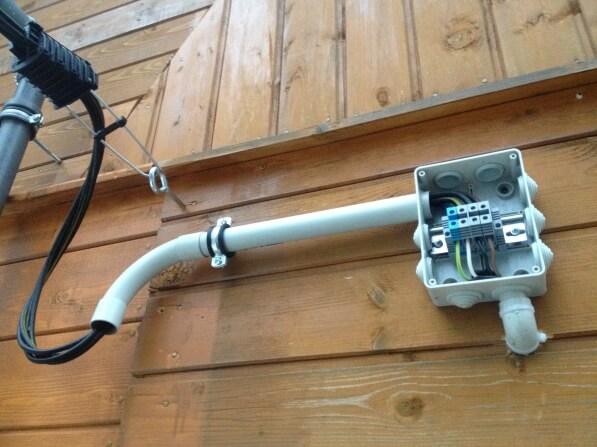
In addition to this option, a VVSG type cable is less commonly used for air input. This is a cable in double insulation made of PVC, and the letter “C” in the marking indicates the presence of a steel support cable.

Laying on the facade of the building or between buildings
This problem is usually encountered when you need to connect lights around the perimeter of the building or at the entrance, lay the cable to the garage, barn, and connect garden lights and light in the gazebo with outlets.
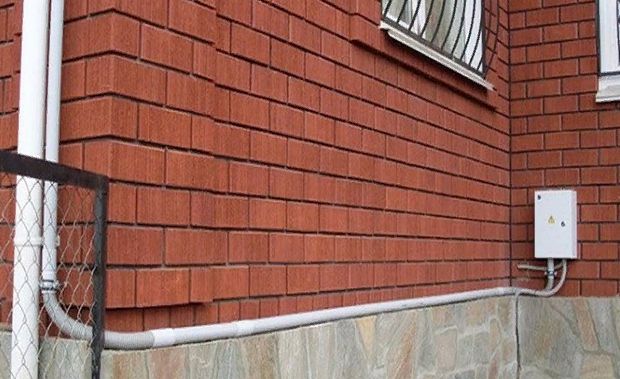
The first requirement to fulfill is to protect the cable from breaks. This means that if the cable does not have a supporting core, such as in the self-supporting insulated wire or the VVSG, it means that when laying on the street, between buildings it must be fixed to a steel cable.
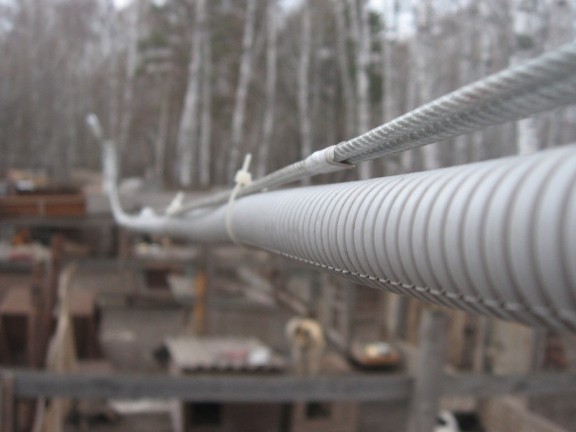
The next step is UV protection.If the same SIP - perfectly tolerates ultraviolet and frost, then the insulation of cables with PVC insulation does not tolerate well in most cases - it cracks. With rare exceptions, the characteristics of such cables indicate that it is designed for outdoor installation. Therefore, when street wiring, you need to use corrugation.
Stupefaction:
Discussions are underway at the forums on whether it is possible to lay VVG in the open air, because the technical characteristics seem to allow this to be done. In order not to check on yourself - follow the advice and use a corrugated pipe.
But the corrugation has the same requirements - it must be resistant to cold and ultraviolet. A metal hose is perfect, or as it is also called a metal corrugation, as well as a polyamide corrugated pipe designed for outdoor laying outdoors, that is, on the street.
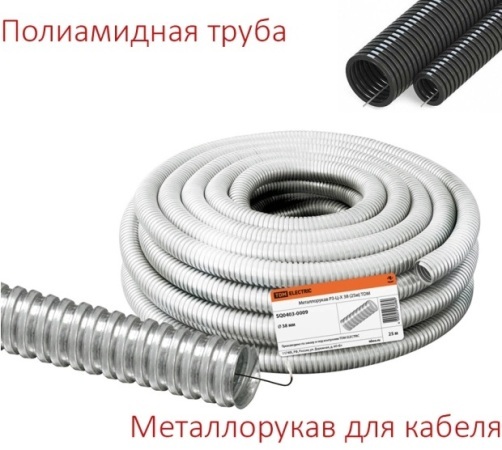
And in the figure below you see a comparison of two types of corrugated pipes. Pay attention to the light - this is PVC corrugation and it is all in the holes. This is a consequence of operating outdoors in the cold and under ultraviolet light.
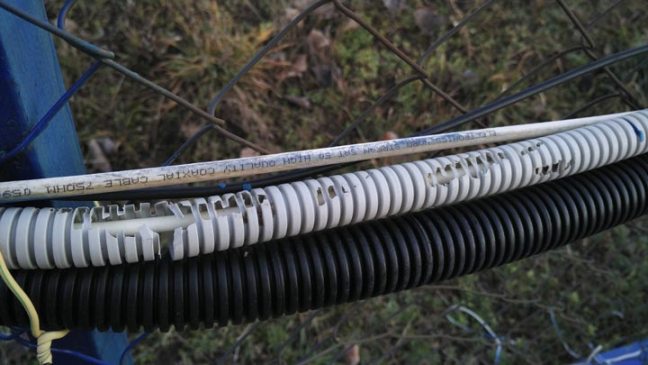
Laying in the ground
Great alternative cable laying over the air - is laying in the ground, the advantages of this method are obvious:
1. There is no ultraviolet light.
2. Protected from low temperatures and wind.
3. Do not spoil the appearance of the site.
4. There is no possibility of tearing when carrying under the line of dimensional objects.
But there are also disadvantages and problems:
1. Under the pressure of the soil and as a result of the movement of soil layers, as well as stones and other solid objects contained in it, the cable may be damaged.
2. When digging trenches and pits, you can also damage the line, especially if you dig with an excavator.
3. There may be groundwater in the soil, it freezes, when it rains heavily it becomes too wet - all these are not the best conditions for an electric cable.
4. The most dangerous problem is damage to the cable by animals, for example, moles.
Therefore, the cable laid in the soil must be protected from mechanical stress. There are two options to solve this condition:
1. Use the VBBSHV cable - this is a cable with copper conductors in an armored sheath of steel tapes.
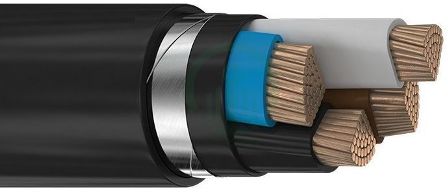
2. Route ordinary cables in the pipe.
Lay cables at a depth of about 0.7 meters, at a distance of 0.6 meters from the foundation of the house, and if there are several cables, the distance between them should be at least 10 cm. When crossing the cables, the distance between them should be at least 15 cm.
The first option has no significant drawbacks, except for the cost of such a cable, and there may be problems with its purchase - it simply is not everywhere. When laying, note that the cable must not lie taut. Lay it in a winding line.
The second option - laying in a pipe, is often used as when installing communication networks, electricity and other communications.
For laying the cable in the ground, HDPE pipes are used. These are polyethylene pipes, usually black.
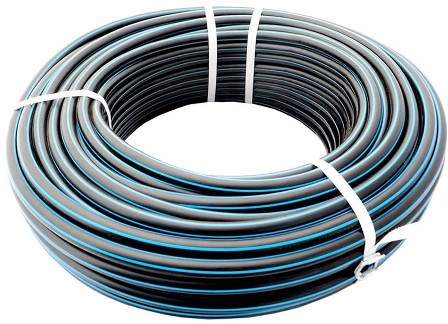
Or PND-corrugated hose
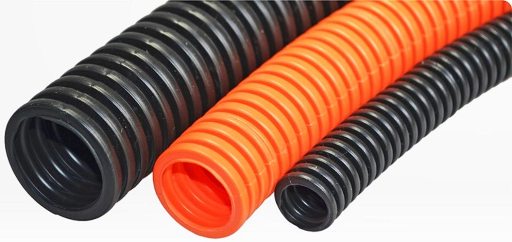
At the same time, the ends of the pipes are sealed, this is how they do it on powerful lines:
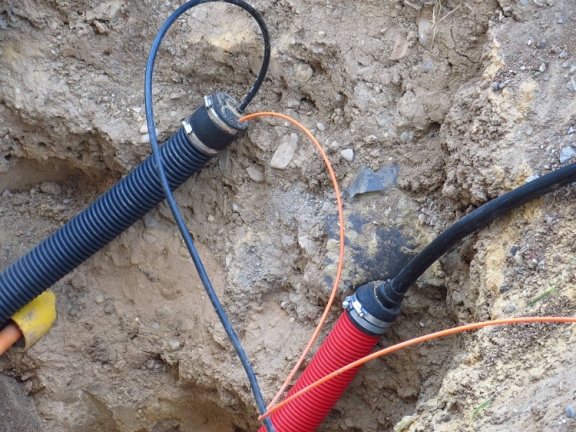
Conclusion
So, for laying the cable on the street, you need to use cables of the VVG or VBbShv brand, and for air installation - SIP or VVSG. At the same time, to protect against ultraviolet radiation, use metal pipes, a metal sleeve or corrugations resistant to ultraviolet (not PVC). In most cases, preference should be given to underground laying - if the work is done correctly, such a line will last longer.
See also at i.electricianexp.com
:
